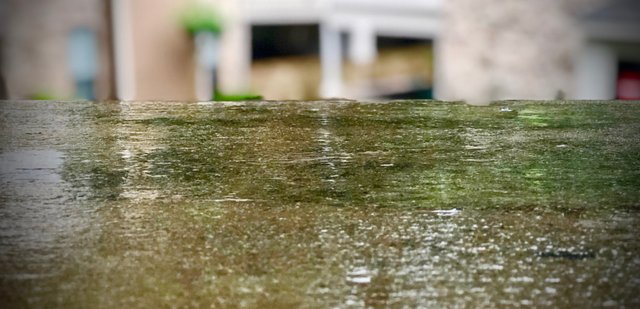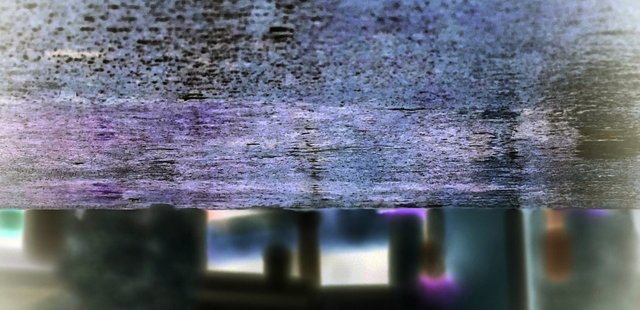Take care an object not thyself o'ercomes — (poem and analysis)
Take care an object not thyself o'ercomes
.poem, images & analysis
.
by @d-pend

Take care an object not thyself o'ercomes
How many times an object speak'th to false
when on some fount I contemplate the waves
who unconcernéd dance and stately valse—
as I pause a dirty comm'ner it self-laves.
Matters not if plant or stone or beast,
its face turns aspectless towards blesséd east.
It opens up its hands—"I shall receive,"
while westward-trailing dark does me deceive.
They come for troughs and pillories of gems;
they come for dainty murals of delight.
I sing a single note at morn and night:
the rest is filled with metamorphic hymns.
Take care the subject hijacks not thy awe,
and satisfied, take Nothing—in the raw.

Form Analysis
First of all, form-wise it is based on a Shakespearean Sonnet, but departs from tradition in several ways. Instead of an ABAB, CDCD, EFEF, GG rhyme scheme (alternating in the quatrains and concluding with a rhyming couplet) it has an irregular scheme ABAB, CCDD, EFFE, GG. All things considered that is not too different, but still worth mentioning.
Like a Shakespearean Sonnet it employs iambic pentameter throughout, but there are two lines that have, instead of ten syllables, nine and eleven respectively. They are lines 4 & 5: "as I pause a dirty comm'ner, it self-laves" [11] ; "Matters not if plant or stone or beast," [9].) How does that affect the flow of the iambic pentameter? The answer in this case is quite simple, but raises an interesting question.
Ordinarily, iambic pentameter is defined as a line of verse with five metrical feet, each consisting of one short (or unstressed) syllable followed by one long (or stressed) syllable, resulting in a flow like "du DUH du DUH du DUH du DUH du DUH." (Example [line 1]: "how MA-ny TIMES an OB-ject SPEAK'TH to FALSE.") In this poem, and many times when I am writing in this scheme, there is the desire to subtly alter this flow by using lines of odd numbers, generally 9 or 11.
Basically, in such a case, a line of nine is simply iambic pentameter omitting the first unstressed syllable. That is, the line both begins and ends with a stressed syllable as follows ([line 5]: "MA-tters NOT if PLANT or STONE or BEAST.") Interestingly, in this case it would be easily finagled to conform to proper iambic pentameter with the addition of the word "it" at the beginning like so: ("it MA-tters NOT if PLANT or STONE or BEAST.") Troublingly, one of the "feet" of this line contains only one long, stressed syllable (the last) when a foot ought to contain two or three syllables, typically.
Is it better to adhere strictly to the rules for the ease of the reader, or honor the aesthetic intuition with the result that it is correspondingly more difficult to read? Ought there to be devised a symbol which would alert the reader that this is an irregular line containing one less syllable, perhaps a minus sign in parentheses in front of the line?
Likewise, in this scheme, a line of eleven begins and ends with a stressed syllable. However, it contains an extra "foot" containing not two but only one extra long, stressed syllable at the end. Actually, I don't believe it can be considered a foot since two or three syllables are generally required for it to be called as such.
Unless, that is, it can be considered a new type of foot containing one long stressed syllable, and one "unstressed syllable" of silence. Basically, it indicates a slight pause in the recitation. What is the proper way to term this? Not being thoroughly classically educated in the academic appraisal of literature, I honestly have no idea. Perhaps @marlyncabrera could provide an adequate answer where I cannot.
In any case, the stress pattern of a line of eleven in this scheme is as in the following example ([line 4]: "AS i PAUSE a DIR-ty COMM-'nor IT self-LAVES.") Ought such a line be denoted by a (+) before the line so the reader is alerted to an irregular line containing an extra, stressed syllable? So much for our discussion of form and questions of potentially clearer notation, which would, however, appear somewhat aesthetically displeasing if employed.
Subject Matter Analysis
Therefore in this piece, "object" and "subject" are considered largely synonymous, since they are both "things" and their "thingness" is what concerns us. Whether the something is considered animate or inanimate is relatively irrelevant in the context of this piece. Especially if we have a sense that a basic quality of reality is livingness, there is no essential philosophical distinction between living and nonliving. Nor is there any argument present that self-awareness, thought, feeling, intuition or any other sentient quality is necessary for an universal livingness to subsume All that Is.
Perhaps now we can look at each quatrain briefly.
Quatrain I
How many times an object speak'th to false
when on some fount I contemplate the waves
who unconcernéd dance and stately valse—
as I pause a dirty comm'ner it self-laves.
Quatrain II
Matters not if plant or stone or beast,
its face turns aspectless towards blesséd east.
It opens up its hands—"I shall receive,"
while westward-trailing dark does me deceive.
Quatrain III
They come for troughs and pillories of gems;
they come for dainty murals of delight.
I sing a single note at morn and night:
the rest is filled with metamorphic hymns.
Final Couplet
Take care the subject hijacks not thy awe,
and satisfied, take Nothing—in the raw.
Conclusion
Dan / @d-pend

By @d-pend
May 23, 2019

@d-pend,
Excellent poem and great analysis. A lot of work went into this post. You are most definitely A-Team.
Respecting "feet" ... I ignore them completely. The French simply count syllables when writing poetry and I do the same in English. In his early career, Shakespeare was disciplined about the syllable (foot) count but as he got older, he became less dogmatic and used whatever worked best. What's good enough for Will is good enough for me.
Dan, join PHC.
Quill
This was a master class of poetry. Easy to understand, with examples and historical references.
A suggestion: Would you analyze a quatrain from Nostradamus? Let me place it here: (There are plenty more of you become interested in doing so)
Century I. Quatrain 12
There will soon be talk of a treacherous man, who rules a short time,
quickly raised from low to high estate.
He will suddenly turn disloyal and volatile.
This man will govern Verona.
@marcusantoniu26,
D-Pendadamus ... hmmm ... you might be onto to something. D-Pendadamus could update Nostradamus' prophesies ... by accessing the Void (with which he is already inimitably familiar), manifesting somethingness from nothingness and crafting quirky quatrains. Hell, he's already doing all of that ... all he needs is a hat.

.
.
Quill :-) :-) :-)
Lets see what he says, looking forward for the response. I also would like to know if the translation into English from French affected the quality of what Nostradamus wanted to communicate.
Hi!
I really enjoyed reading this sonnet but definitely loved how the final couplet sounded as I read it aloud.
You got me thinking and counting beats and repeating lines 4 and 5. I’d say line 5 is just “iambic pentameter, catalectic” (catalectic by headlessness, for it drops the unstressed syllable of the first foot, instead of dropping the final syllable of the last foot), but there’s line 4: You know, if you pause before pronouncing the extra syllable “-laves” at the end of line 4 and make it the initial sound of line 5 while reciting it, you get 10 and 10 sounds for each line (4 & 5, like they both were iambic pentameter, acatalectic) XD
As always, your poetry is profound, musical, and thought-provoking. Your poem covers this issue:
…And it does just beautifully.
I think the sonnet form is just ideal to make argument and musicality come together in a single piece. It makes our brains understand that knowledge has an emotional side; then our hearts resonate with our minds.
I enjoyed this analysis, dear @d-pend. It was like being invited to chat about your poem in a finely decorated room inside your head, while you played your piano.
The way you discuss how meaning is so changeable reminds me of "Blue and Green" by Virginia Woolf.
Thanks for an amazing read! :)
Great analysis, my friend @marlyncabrera!
To listen to the audio version of this article click on the play image.

Brought to you by @tts. If you find it useful please consider upvoting this reply.
I learned a new world @d-pends. Thanks for that.
I hope you are doing well my friend.
I haven't seen a lot from you in a while. Probably my fault as I can't
Stand to browse my feed. Too much actifit and not enough interesting
Content for me. No insult to anyone intended.
I've upvoted this post.
Hi @d-pend!
Your post was upvoted by @steem-ua, new Steem dApp, using UserAuthority for algorithmic post curation!
Your UA account score is currently 5.449 which ranks you at #693 across all Steem accounts.
Your rank has not changed in the last three days.
In our last Algorithmic Curation Round, consisting of 483 contributions, your post is ranked at #197.
Evaluation of your UA score:
Feel free to join our @steem-ua Discord server
Excellent poem and great analysis. For me, the whole poem is a teaching, it is educational, it contains lessons.
Lovely